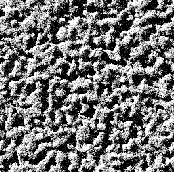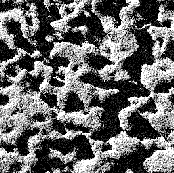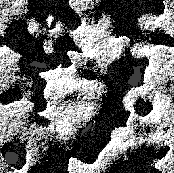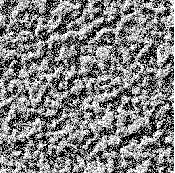Let us consider a dynamics based on majority vote: at each step, the state of a cell will tend to agree with the majority of its neighbors. Under this dynamics, larger and larger domains will form ( annealing by phase separation), as in the following figure. Note that the total area of the boundary beween domains tends to decrease, effectively displaying surface tension.



Similar, but closer to the details of microscopic physics is the Ising model, which captures essential aspects of the interplay between order and disorder in matter. This model consists of an array of spins which can be pointing ``up'' or ``down'', and interact with one another and possibly with an external field. At high temperature, the spins tend to assume random orientations. At low temperature, energy-budget constraints favor a coherent alignment, and the system as a whole is forced to choose between the two opposite but equivalent orientations (symmetry breaking). The transition (at the critical temperature) between random and coherent alignment is very sharp.
In the following figures, which depict a three-dimensional Ising model, ``matter'' and ``vacuum'' represent, respectively, ``spin up'' and ``spin down''. Below, we show an Ising spin system undergoing progressive cooling.


